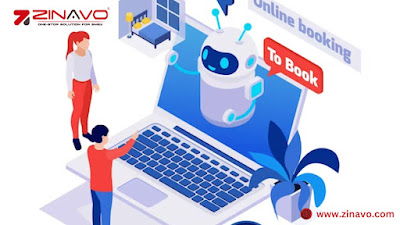What Are the Most Important Trends Shaping Website Development in 2026?
Introduction:
Website development in 2026
1. AI-Powered Development & Hyper-Personalization
Artificial
Key Ways AI Shapes Website Development:
Generates smart design suggestions and
optimizes layoutsPersonalizes content based on user behavior and preferences
Powered by AI chatbots for 24/7 intelligent supportAutomate testing, debugging and performance optimization
AI-driven websites offer higher engagement, faster development and smarter user interactions making personalization the new standard.
2. Progressive Web Apps (PWAs) Evolving Into Full App Replacements
Why PWAs Lead in 2026:
Work offline with saved data
Load instantly with lightning-fast performance
Deliver an app-like user experience without installationSend push notifications directly from the browser
Reduce development and maintenance costs
Businesses prefer PWAs because they offer high
3. Serverless Architecture & Edge Computing
Benefits of
Lower hosting and maintenance expenses
Auto-scaled performance during high traffic
Minimal downtime and faster global accessEnhanced security with isolated functions
Faster data processing near the user’s location
This trend empowers websites to perform at top speed regardless of user location.
4. WebAssembly (Wasm) Enabling High-Performance Web Apps
WebAssembly
What
3D product configurators
High-speed design tools
Real-time simulations
Browser-based video editing tools
Advanced analytics dashboards
5. Low-Code/No-Code Platforms Empower Faster Development
Low-code and no-code solutions
Impact of
Faster prototyping and deployment
Reduced technical dependency
Cost-effective development for small businesses
Easy integration with existing systems
Better collaboration between teams
These tools democratize web development and accelerate innovation.
6. Immersive 3D & Interactive Web Experiences
Websites in 2026
Examples of Immersive Web Elements:
3D product previews
Virtual tours (homes, offices,
stores). Interactive storytelling sections
Scroll-based animations
Realistic
model of interactions
These experiences increase engagement and bring products to life online.
7. Sustainable & Eco-Friendly Web Development
Using optimized images and compressed files
Choosing eco-friendly hosting providers
Writing efficient, lightweight code
Reduce unnecessary scripts and pluginsImprove mobile and low-bandwidth accessibility
8. Accessibility & Inclusive Design as Core Requirements
Accessibility is no longer optional it's essential. Websites in
Accessible Design Focus Areas:
Clear typography and readable color contrast
Keyboard-friendly navigation
Screen reader compatibility
Alt text for all images
Simple, distraction-free interfaces
Accessible
9. API-First Development & Headless CMS Architecture
API-first development
Why API-First Development is Growing:
Faster
integration with third-party toolsMulti-channel publishing (web, mobile,
apps). Easy upgrades without breaking the frontendEnhancing performance and securityGreater flexibility in design and development
This approach helps businesses build adaptable and future-ready digital ecosystems.
10. Stronger Security & Cyber-Resilience
Major Security Trends:
AI-driven threat detection
Zero-trust architecture
Multi-layer authentication
Secure API design
Automated patching and monitoring
Stronger security builds user trust and protects business credibility.
Conclusion
Website development in 2026
For More Information:-
Call us: +91-8035694395
WhatsApp: +91-7760245945
Mail: info@zinavo.com
Website: www.zinavo.com




Comments
Post a Comment